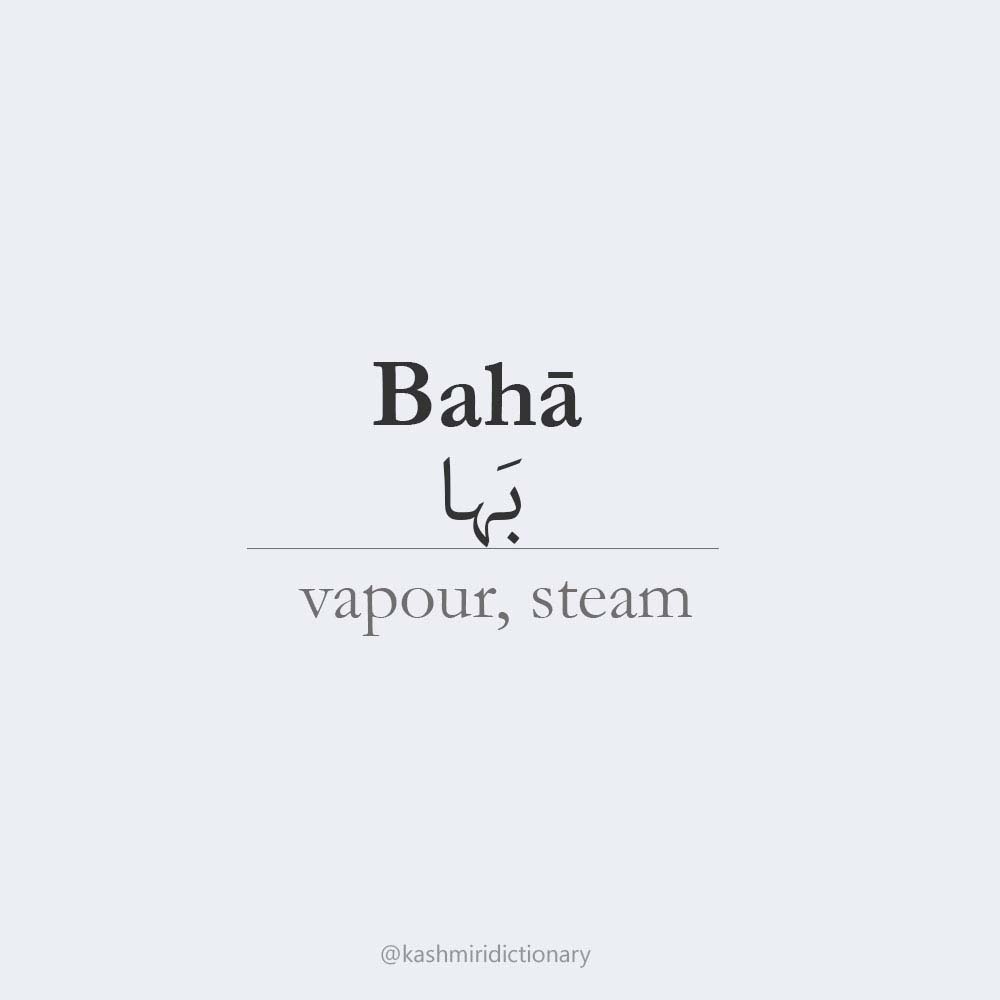- Apple Trees: Apple is the most widely cultivated tree fruit around the globe. The three top apple-producing countries are China, the United States, and Poland with an economic impact of $3.55 billion in 2017. There are more than 7,500 known cultivars of apples throughout the world.
- Almond Trees:
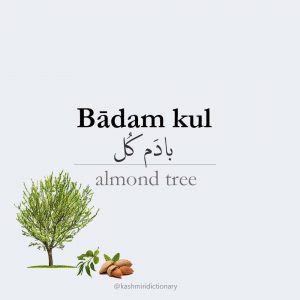
Bādam kul / baadam kul / almond tree
Word origin: Persian بادام (bâdâm)
Bādum (sing): almond
Bādām (plu): almonds
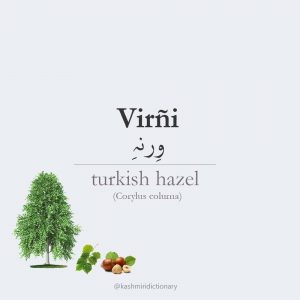
Virñi – hazel
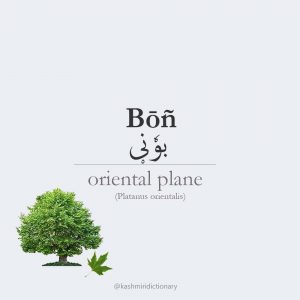
Bōñ – oriental plane
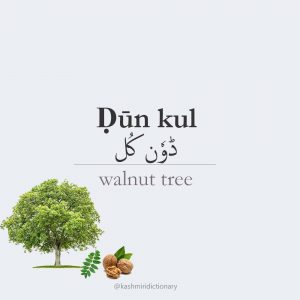
Ḍūn kul / doon kul / walnut tree
Ḍūn (sing): walnut
Ḍūyn (plu): walnuts
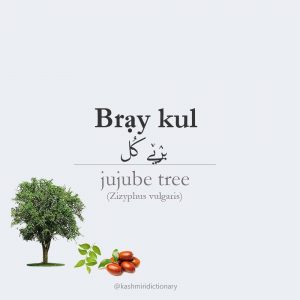
Brạy kul / jujube tree /
7. Sweet Chestnut Trees:
The sweet chestnut tree is known as Gaer kul in Kashmiri, scientifically known as Castanea sativa var. himalayensis, is a majestic tree native to Kashmir. It belongs to the Fagaceae family, which also includes oak and beech trees. Here’s a description of the tree: Mostly found around Dachigam, Haerwan area in Srinagar.
Appearance:
The Kashmiri sweet chestnut tree is a large deciduous tree with a broad, spreading crown. It can grow up to 20-30 meters (65-100 feet) tall, with a trunk diameter of about 2 meters (6.5 feet). The bark is smooth and grayish-brown when young, becoming deeply furrowed and rough with age.
Leaves:
The leaves of the Kashmiri sweet chestnut tree are alternate, simple, and oblong-lanceolate in shape, with serrated margins. They are dark green in color and turn yellow or brown in the fall before shedding.
Flowers:
The tree produces small, creamy white flowers in long, erect catkins. These flowers are typically borne in late spring to early summer and are a source of pollen for bees.
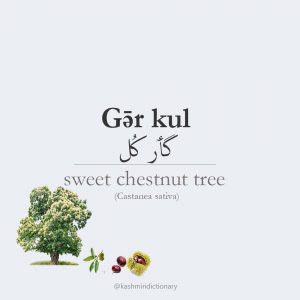
Fruits:
The most prized feature of the Kashmiri sweet chestnut tree is its sweet, edible nuts, known as chestnuts. These nuts are encased in a spiky, green burr that splits open when ripe, revealing 1-3 shiny brown nuts inside. The nuts are rich in carbohydrates and can be eaten raw, roasted, boiled, or used in various culinary dishes.
Habitat:
This tree thrives in cool temperate climates and is commonly found in the subalpine and montane forests of Kashmir. It prefers well-drained, acidic soils and is often cultivated for its nuts in orchards.
Cultural significance:
The Kashmiri sweet chestnut tree holds cultural and economic importance in the region. Its nuts are a cherished delicacy used in traditional Kashmiri cuisine, particularly in dishes like chestnut korma and chestnut halwa. Additionally, the wood of the tree is valued for its strength and durability, used in construction, furniture making, and woodcraft.
Gǝr kul / gær kul / sweet chestnut tree /
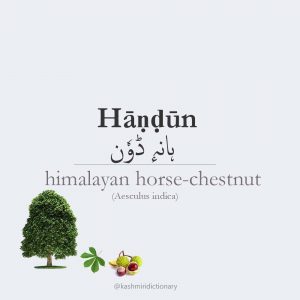
Hāṇḍūn – horse-chestnut
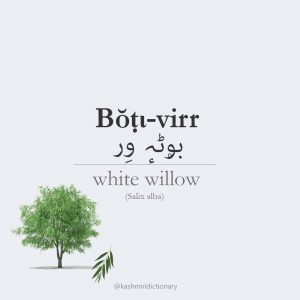
Bŏṭι-virr – white willow
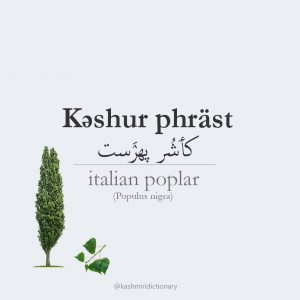
Kǝshur phräst / kæshur phryas / italian poplar
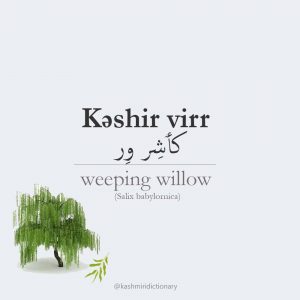

Kǝshir virr – weeping willow



Kǝshur phräst – italian poplar
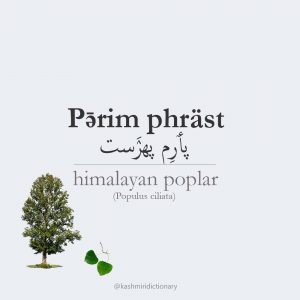

Pǝrim phräst / pærim phryas / himalayan poplar
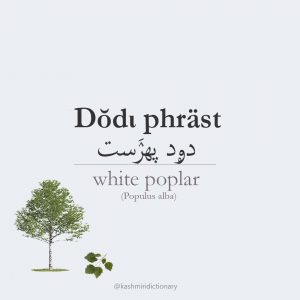

Dŏdι phräst / dwodi phryas / italian poplar
Rūsi phräst / russi phryas / russian poplar / (Populus detoides)
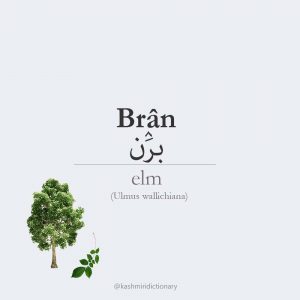

Brân / elm tree /
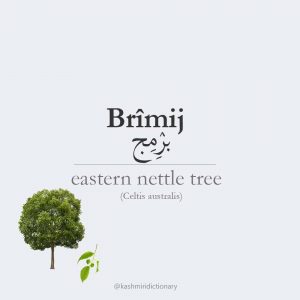

Brîmij / eastern nettle tree
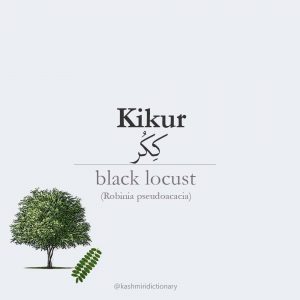

Kikur – black locust


Yə̄r / yaaer / himalayan blue pine /
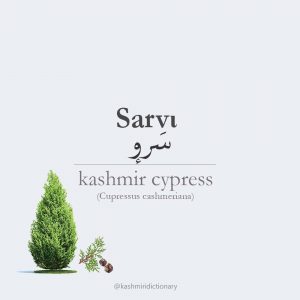

Sarvι /kashmir cypress /


Divdār / divdaar / deodar /
Example sentences:
Kōhi biyābā muntazir divdār heth: the colossal mountains along with the deodars are waiting.

